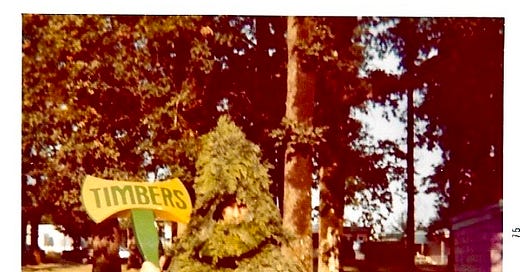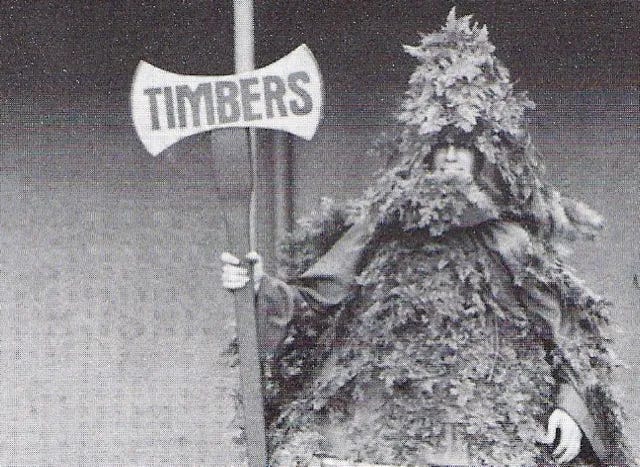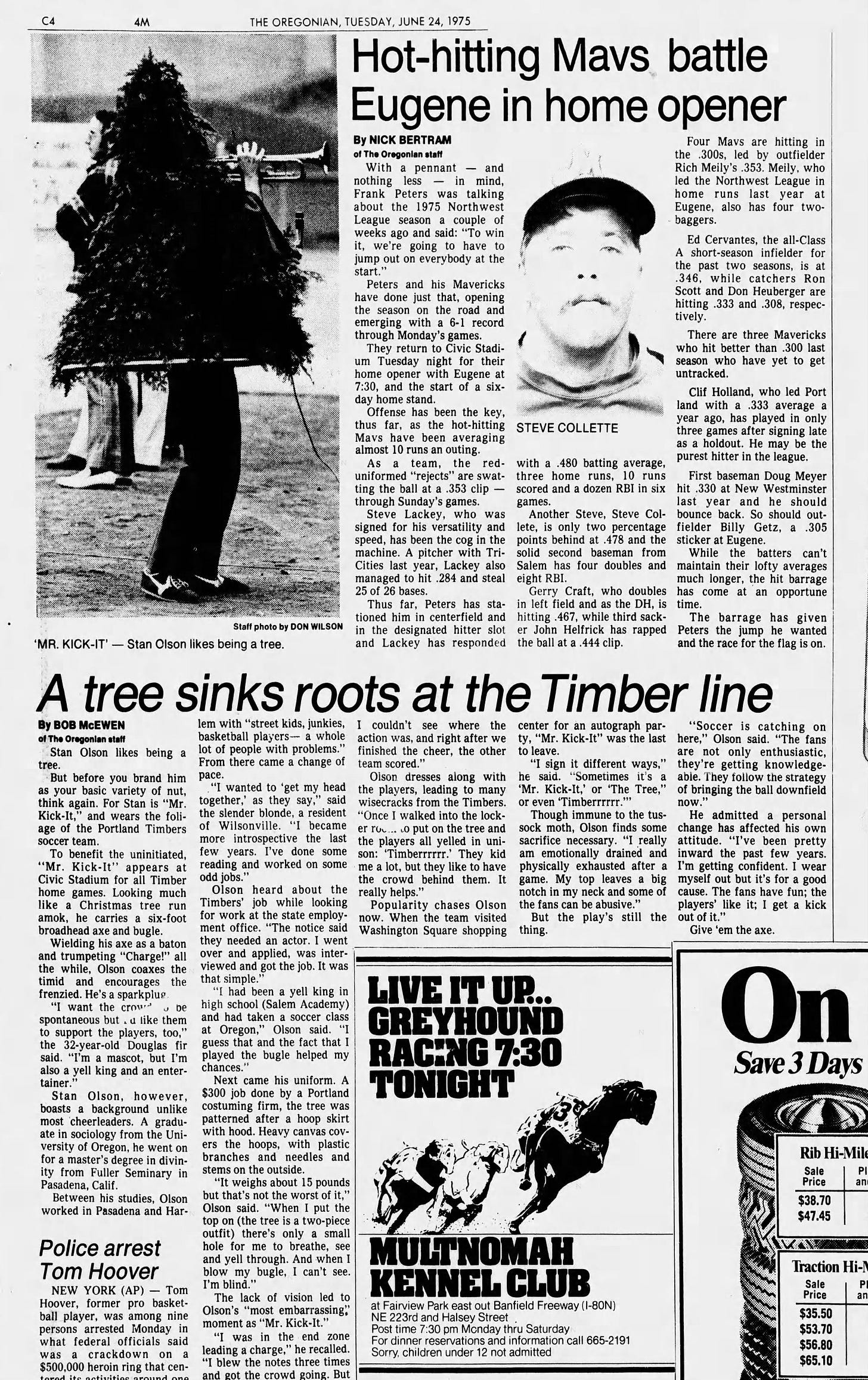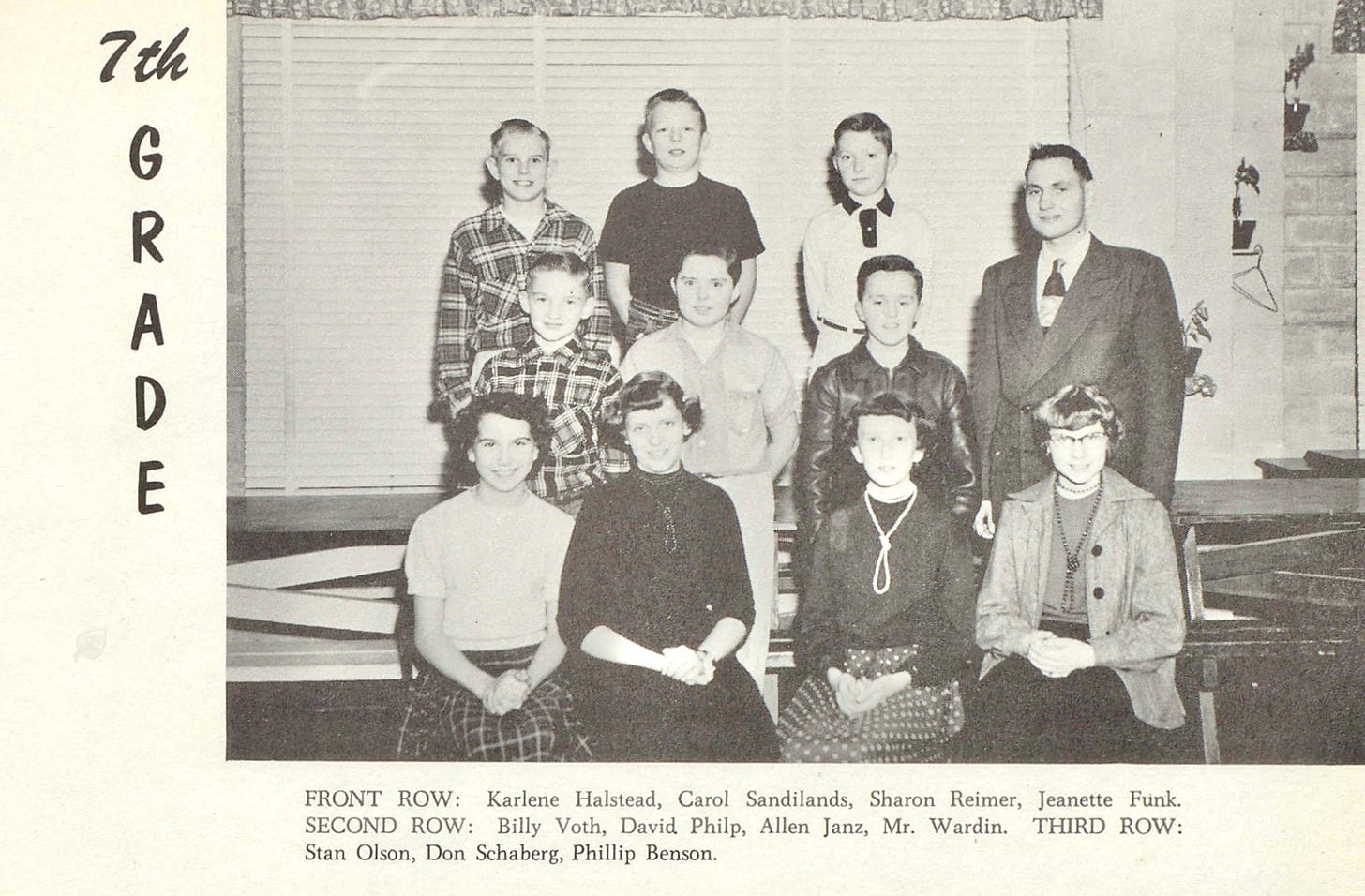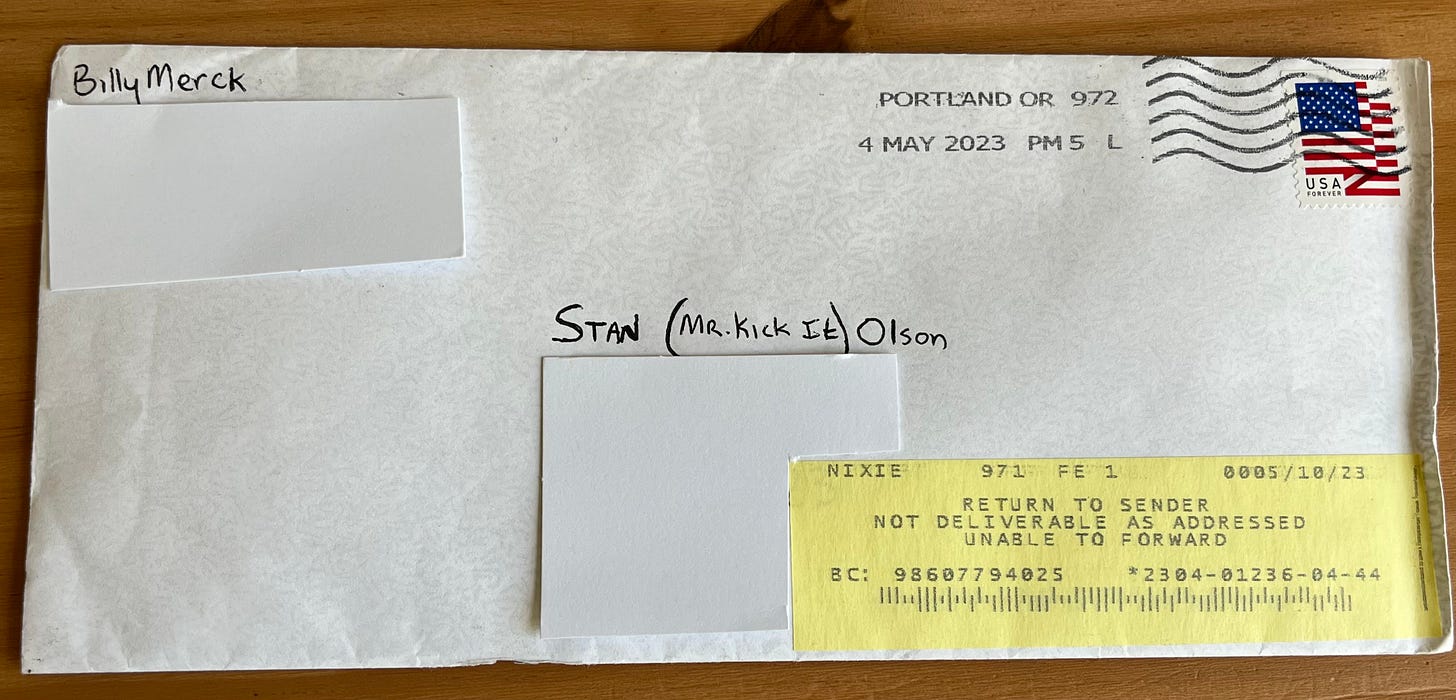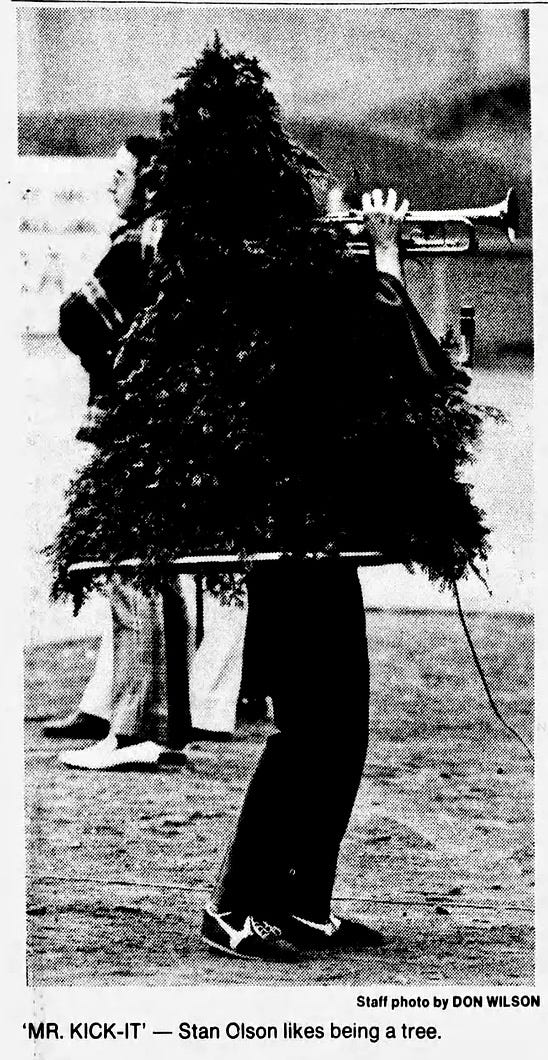Just over two years ago, this project started with a post promising a journey as grandiose as it is was naive:
Somewhere out there is a 6-foot-axe-wielding, trumpet-playing tree who answered a 1975 ad at the Oregon State Employment Office and became the first Timbers mascot: Mr. Kick It.
I want to find him.
His name is Stan Olson, and I’ve been looking for him as I look for the stories that represent Soccer City, USA.
That was the plan: an essay a month and a cursory search for the person who first patrolled the then-Civic-Stadium sidelines, dressed as a Douglas fir, belting out “Charge” on his trumpet.
“Over the next 10 months, at the end of each month” I promised, “I will share my journey here in Green Is the Color, as I write stories that link us over the last 50 years, together through soccer, the Timbers, and each other.”
True to the nature of quests, what I found was not exactly what I intended at the onset. For example, take the 10 months of essays. Those became more than only long-form narratives, as the interviews with the people who lived the history were just too good to keep for myself in my notes, and, 55 podcasts (and counting) later, there’s a repository, from the sources themselves, that I never anticipated existing.
Then there’s the claim about locating the person who played that first mascot I need to reconcile. “I’ll always add an update on my quest to find Mr. Kick It!,” I wrote. “He’s out there. I’ll find him. As sure as green is the color, and soccer is the game.”
After years of trying every tool I had at my disposal, I never did find Mr. Kick It!
He, instead, found me.
I. “I can play the trumpet.”
Though the Green Is the Color project started in 2023, the origin of this specific search predates the project by three years. In 2020, after reading Michael Orr’s The 1975 Portland Timbers: The Birth of Soccer City, USA, I reached out to the author to first thank him for writing something so important about the team’s history and second to pester him with questions about the book, his process, and a 2019 appearance he made on the podcast Good Seats Still Available. My first question in that now half-decade-old exchange started like this: “In the podcast, you mention a first mascot. It was something before Timber Jim—a guy in a tree costume.”
It was Orr, at that point, who first told me about Mr. Kick It! And it was that scrap of our conversations that lit my candle of curiosity, an interest that still burned a while later as I launched Green Is the Color. Eventually, as the project developed, Orr offered to share some of his resources from his book research, in case they might be of use to me for backstory. Buried in a nugget of audio from one of those files, I heard the first Timbers PR Director, Dennis O’Meara, tell the story of the interview in 1975 when a 32-year-old Stan Olson became Mr. Kick It!, after uttering these five words: “I can play the trumpet.”
Here’s O’Meara’s first-person account of the moment, clipped from Podcast Episode 55:
II. The Oregonian as CV
Bob McEwen’s June 24, 1975, article provided all I initially had as a tangible roadmap. It gave me the name Stan Olson, an exact age in 1975, and a history of academics and experience that sent me on my way. After the requisite Googling, I landed on a plan to search through the three schools noted in McEwen’s piece.
Through that part of the journey, I (virtually) met good people, willing to help. Yet, in the end, I ended up no closer to Olson.
Fuller Seminary (Pasadena, California): I initially tried to go it alone in the Fuller Seminary alumni space. However, I quickly hit the obstacle of having to create an alumni account. Undeterred, I forged ahead and applied for one, awaiting what I anticipated to be swift approval, despite the red-flag-raising fact that I never attended Fuller Seminary. It wasn’t long before the diplomatically titled email—“Question regarding your registration for the Fuller Alumni Network”—landed in my inbox. I came clean and explained, though I’m not an alumnus of the Seminary, my interest and intent is to find someone who was, so I can tell his story. The kind Fuller employee who helped me was very supportive and took the lead on this route to its unfortunate, but, as I would discover, all-too-common, conclusion:
Salem Academy (Salem, Oregon): Between the McEwen article’s mention of Salem Academy, enough basic math that I could figure when Olson had been in high school, and research skills forged in too many years of my own graduate-school journey, I felt confident I’d triangulated Olson’s era at Salem Academy to put him squarely in the Class of 1960. Further fortuitous research revealed (to me, at least) that the school is K-12, a fact that allowed me to extrapolate back and know, when I found a 7th-grade yearbook photo of a Stan Olson posing with other student-body officers, that I had in fact a photo of the Stan Olson!
By this point, I’d also already previously sent a letter to a Tigard, Oregon address I’d thought I’d found for Olson, a letter that was returned unopened. Unfortunately, this result was independently replicated by the good person at the Salem Academy Alumni office who offered to help:
University of Oregon (Eugene, Oregon): The University of Oregon has over 275,000 living alumni in its network. Finding a needle the size of one person in a haystack of over a quarter of a million, even with massive magnets, is asking a lot. My magnets, as reliable as one can get, found potential aliases, an email, and a phone number. The email bounced back, and the phone number was disconnected. It mattered not if the aliases applied. All roads ended in the same place I’d started.
It was time to admit to myself that I had exhausted all I had at my disposal, and nothing yielded contact with Stan Olson. My last lead ran dry at the end of September 2024. Though thankful for interactions with the good people trying to help me on this quest, I was left with nothing else more than the interest I started with and the returned letter soberingly sharing “Not deliverable as addressed” and “Unable to forward.” I was defeated.
Then, a little over a week later, I received the following email:
Hello!
Stan (Mr. Kick-It) was my husband's uncle.
I found out that you were searching for him on a random Google search.
Stacey Olson
And a few weeks after that, I found myself sitting at a table with Stan Olson’s niece (Kimberly) and nephew (Kirk) and their spouses—Harold Otterlei and Stacey Olson, respectively—about to find more than what I’d been looking for this whole time.
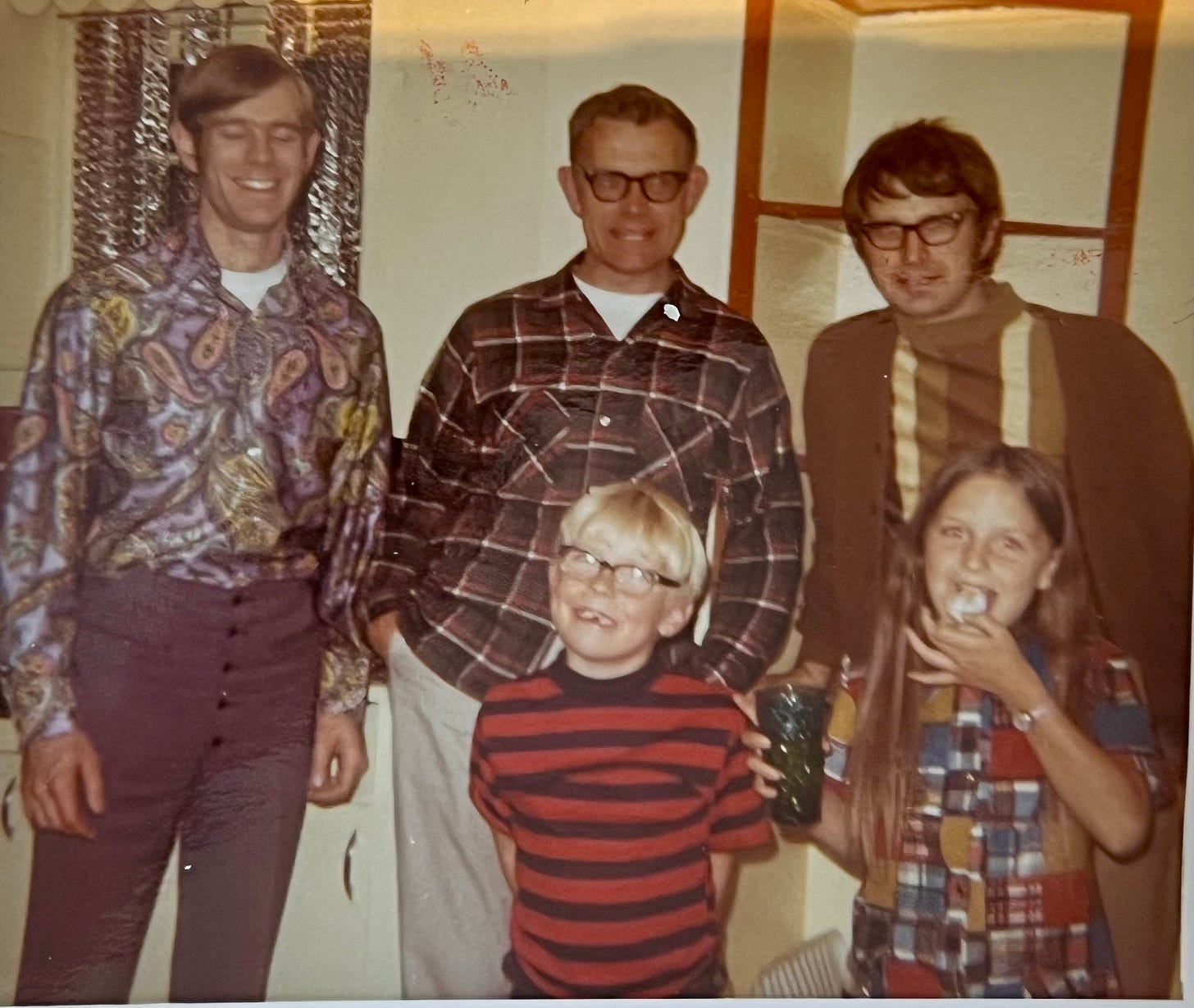
III. “My uncle is the Timbers Tree.”
Stan Olson was the fun uncle. The youngest of three brothers, he was quick with a joke and quicker to help someone who needed it. Stan—for someone impossible to find—seemed to leave an impression with anyone he met.
“The thing about Stan,” his nephew Kirk told me, “is he was a very genuine person. There was never any facade with him.” Then he laughed, “He loved to tell jokes, but they weren’t always good jokes.” Then Kirk described his uncle as the person who would drive across Portland to help people go to their church. “He always had time for people,” Kirk added. “He was always willing to give of himself and his time for other people.”
“As a [kid], you look up to your uncle,” Kirk said amid the reminiscing. It helps when that uncle takes you for rides down a hill on his Honda 50CC, as both Kirk and Kimmy remember.
Then, there’s a specific memory Kimmy has of a time with her uncle in 1975. “He took me to a drive-in to see Jaws.” She was 12 when the movie came out. “I really wanted to see Jaws,” she said, recalling the experience, “and then (after getting there and the movie starting) I didn’t really want to see Jaws.”
When Kirk and Kimmy’s dad, John Olson, came home from the Army, his younger brother—with his trumpet—gave him a one-man welcome-home reception to remember. “[Stan] met him when he came home,” Kirk said. “My dad is John,” Kimmy added, “and he was called Johnny.” When Johnny got off the train, there was Stan in the train station, belting out a solo rendition of “When Johnny Comes Marching Home,” on his trumpet.
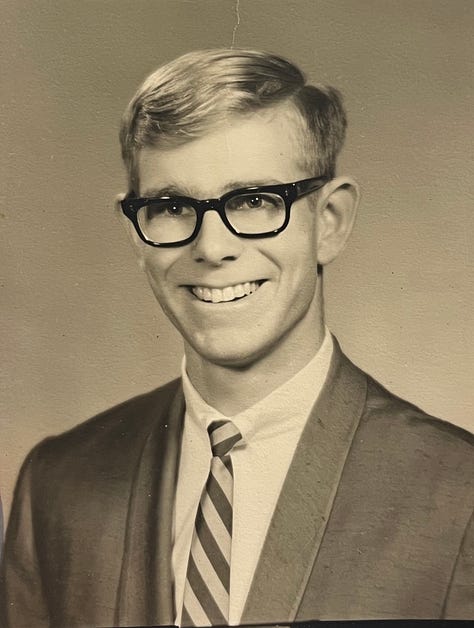
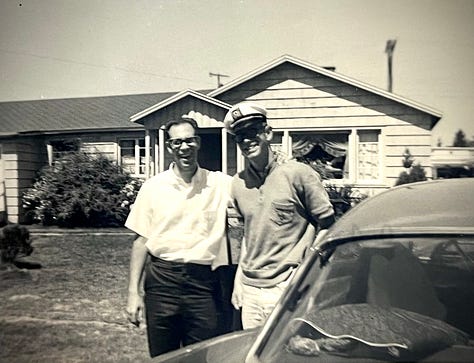
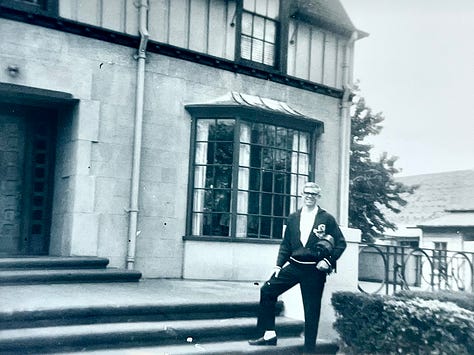
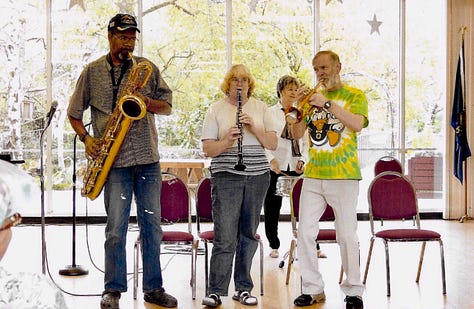
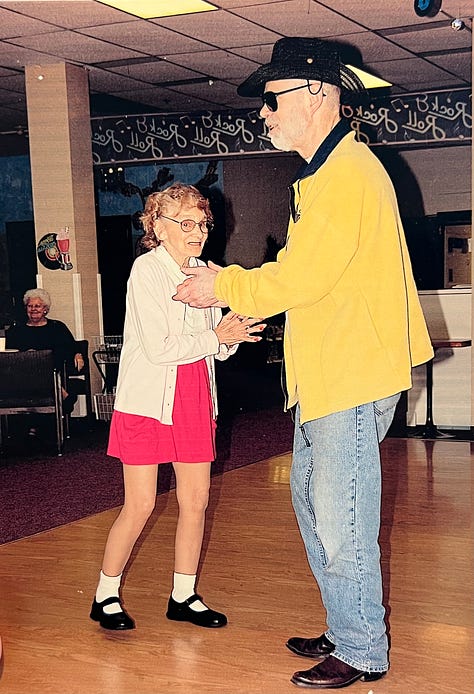
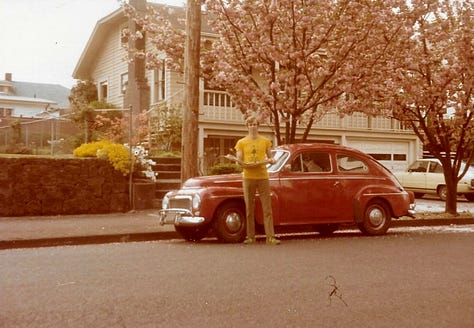
As for official business, there’s the time Stan, as Mr. Kick It!, took Kirk to ride along on a float in the 1975 Tigard Parade, a candy-throwing experience Kirk will never forget: “It was the coolest thing I ever did with him publicly.”
What 12-year-old wouldn’t want The Timbers Tree, as Kimmy called him, as their uncle?
IV. Stan Olson Likes Being a Tree
Stan’s family was generous with me, sitting there for over an hour sharing the stories I never could have found on my own. They even filled in the narrative thread running through the 1975 piece in The Oregonian.
After Salem Academy, the University of Oregon, and Fuller Seminary, Olson pursued a path of service, of helping others. As McEwen writes, Olson worked in “Harlem with ‘street kids, junkies, basketball players—a whole lot of people with problems.’” The article then attributes Olson’s move back to Oregon as a way “to ‘get [his] head together.’”
What they shared with me is this: While working to help others in New York, Olson was mugged one night, an experience that left him with what we now know as PTSD.
At the end, McEwen writes, “[Olson] admitted a personal change has affected his own attitude. ‘I’ve been pretty inward the past few years […]. I wear myself out but it’s for a good cause. The fans have fun; the players like it; I get a kick out of it.’”
In 1975, Stan Olson walked into our stadium, walked into our history. He walked into our lives, and we learned how much we mean to each other, how little scores matter compared to what we really seek, what we really need. I’m guessing he didn’t know when he told Dennis O’Meara about his affinity for the trumpet that he’d found his own future elixir in being a Timber. And, I’d bet he didn’t know he’d be here, 50 years later, bringing us together, to find what we’re looking for—or to allow it to find us.
Stan Olson passed away on July 8, 2021. His nephew’s wife, Stacey—the one who initially emailed me—never met him. “It was COVID [shutdowns],” she said of the time not long after she and Kirk met. “We went to [Stan’s care facility] window, and we tapped on it,” she said of getting as close as she had to the man that brought us all together that day, the one who brought us all together in this project.
I inquired about his place of internment and got a good laugh because the group had, earlier that morning before we met, been up scouting locations to spread Stan’s and other family members’ cremated remains. “We have his ashes and we plan on taking them to a scattering canyon (at a cemetery),” Kimmy told me.
“In the trees,” Kirk added.

Five years after I first heard of Mr. Kick It! and three since I started this project under the partial premise of locating Stan Olson, I couldn’t be happier with where my failures took me. There’s little I’d trade for the stories I have found, for the people I have met, and for the privilege to keep on the quest. I’m happy to say I never found Mr. Kick It! And I’m even happier to say he found me.
The next time you’re at Providence Park, when the Timbers on the field make you feel the same emotion as the person next to you, as the people around you, and you forget everything else outside the stadium for just a little while, and you hear the Timbers Army, and you hear Timber Joey’s chainsaw rev, if you listen with the right part of your heart, you’ll hear Stan Olson’s trumpet, and you’ll know he found you, too.
#RCTID

